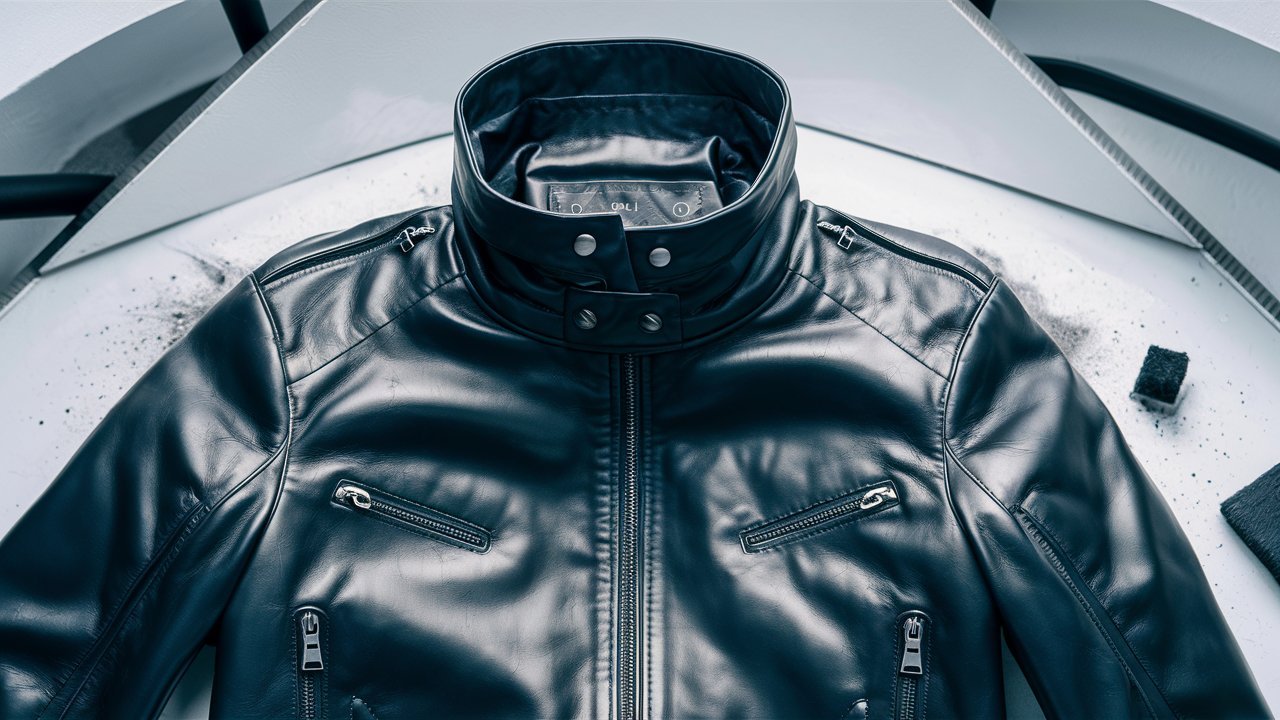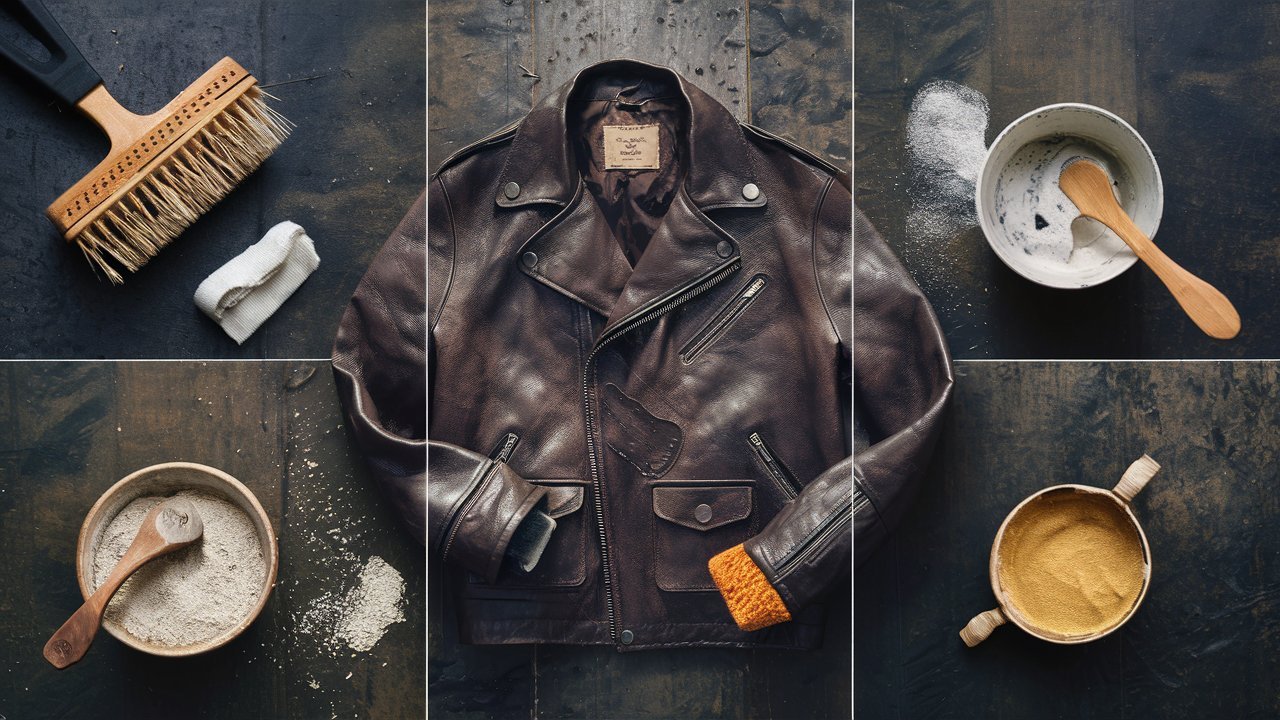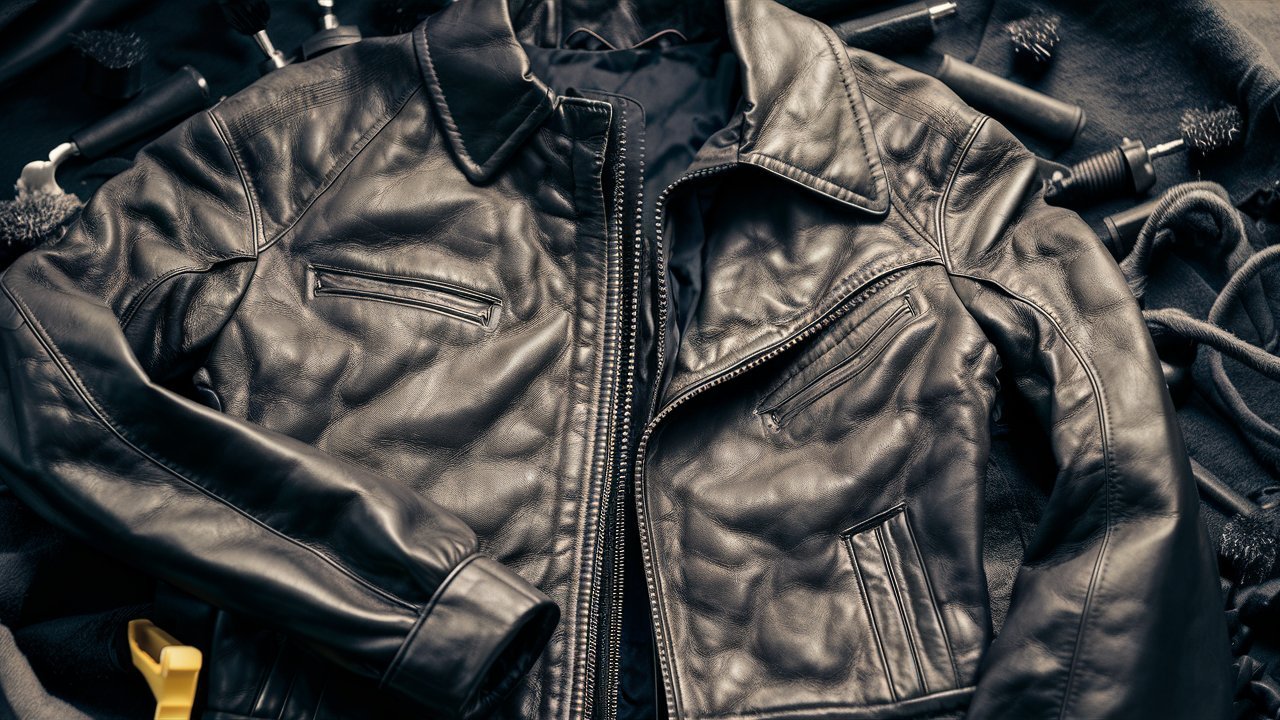How To Clean A Faux Leather Jacket?
Faux leather jackets have gained immense popularity for their affordability, durability, and stylish appearance. Unlike genuine leather, faux leather is synthetic, making it a more sustainable choice for fashion enthusiasts. However, to maintain the charm and longevity of your faux leather jacket, regular cleaning and proper care are essential.
Understanding Faux Leather Material
Composition of Faux Leather
Faux leather, also known as synthetic leather or pleather, is typically made from polyurethane (PU) or polyvinyl chloride (PVC) coated fabric. These materials mimic the look and feel of genuine leather while being more cost-effective and environmentally friendly.
Differences from Genuine Leather
While faux leather closely resembles genuine leather, it lacks the natural pores and variations found in animal hides. This makes faux leather less susceptible to moisture damage and easier to clean.
Importance of Cleaning Faux Leather Jackets
Regular cleaning of your faux leather jacket is crucial for maintaining its appearance and prolonging its lifespan. Dirt, dust, and stains can accumulate over time, leading to discoloration and deterioration of the fabric.
- By keeping your jacket clean, you can prevent premature wear and tear, ensuring that it remains in pristine condition for years to come.
- Cleaning removes surface impurities and restores the jacket’s original luster, enhancing its overall aesthetic appeal.

Preparation for Cleaning
Before embarking on the cleaning process, it’s essential to gather the necessary materials and carefully read any manufacturer instructions provided with the jacket. Here’s what I recommend:
- Soft-bristled brush or clean cloth: Use this to remove surface dirt and debris from the jacket gently.
- Mild soap: Opt for a gentle soap such as dish soap or baby shampoo to avoid damaging the faux leather material.
- Water: Lukewarm water will be used to create a cleaning solution with the mild soap.
- Stain remover (optional): If dealing with stubborn stains, consider using a mild stain remover suitable for faux leather.
- Leather conditioner: After cleaning, apply a small amount of leather conditioner to keep the material supple and prevent it from drying out.
- Soft sponge or cloth: Use this to apply the cleaning solution and gently wipe down the jacket.
- Rubbing alcohol or nail polish remover (for ink stains, optional): If facing ink stains, these products can help lift the ink from the material.
- Cornstarch or talcum powder (for oil and grease stains): These can be used to absorb excess oil before cleaning.
- Baking soda (for tough stains): Create a paste with water to tackle stubborn stains effectively.
By having these materials ready and understanding any specific instructions from the manufacturer, you’ll be well-prepared to clean your faux leather jacket effectively and safely.

Basic Cleaning Steps
To remove surface dirt and debris from your jacket, it is recommended to use a soft-bristled brush or a damp cloth. This will help you get rid of any loose dirt that might have accumulated on the jacket. It is important to be gentle while brushing so that you do not damage the fabric.
For stubborn stains like oil or ink, a pre-treatment is required before you proceed with the cleaning process. You can use a mild detergent or stain remover to pre-treat the stain. Apply the detergent or stain remover to the affected area and let it sit for a few minutes. After that, gently rub the area with a soft brush or cloth to help break down the stain. Once you have pre-treated the stain, you can proceed with the cleaning process.
Deep Cleaning Techniques
Using Mild Soap and Water
To deep clean your faux leather jacket, it’s important to use the right techniques. Start by preparing a solution of lukewarm water and mild soap, such as dish soap or baby shampoo. This will help to gently remove any dirt or stains from the surface of the jacket. Once you have your solution, dampen a clean cloth or sponge with it and begin wiping down the entire surface of the jacket. Be sure to pay extra attention to any areas where there are visible stains or dirt buildup.
Avoiding Harsh Chemicals
It’s important to avoid using harsh chemicals or abrasive cleaners when cleaning your faux leather jacket. These types of cleaners can damage the material and diminish its quality over time. Stick to using mild soap and water to keep your jacket looking its best and to protect it from any unnecessary wear and tear.
Drying and Conditioning
After cleaning, allow the jacket to air dry naturally in a well-ventilated area away from direct sunlight or heat sources. Once dry, apply a small amount of leather conditioner to keep the material supple and prevent cracking.

Storage Tips
To maintain the shape and integrity of your faux leather jacket, store it in a cool, dry place away from direct sunlight. Avoid hanging it on wire hangers, as they can leave creases or deform the fabric. For more detail on tips related to storage of leather jackets, check out my article.
Common Mistakes to Avoid
One of the common mistakes that people make while cleaning their faux leather jackets is using abrasive cleaners or rough scrubbing brushes, which can cause scratches or damage to the surface of the jacket. Therefore, it’s best to avoid using such cleaners and brushes.
Another mistake that people make is exposing their jackets to excessive sunlight, which can cause fading and discoloration of the faux leather material. To prevent damage from UV rays, it’s recommended to store your jacket in a shaded area when not in use.
Repairing Damages
For minor damages such as small tears or scuffs, consider using a faux leather repair kit to patch up the affected areas. For more extensive damage, consult a professional leather repair service for expert assistance.
Long-Term Maintenance
To ensure the continued longevity of your faux leather jacket, conduct regular inspections for signs of wear and tear. Apply a leather conditioner every few months to keep the material hydrated and supple.
Environmental Considerations
Choosing eco-friendly cleaning solutions can significantly reduce your environmental impact. It’s a great way to protect our planet while keeping your home clean and healthy. Additionally, instead of throwing away your old jacket, you can consider donating it to a charity or recycling it to help minimize waste and promote sustainability. These small actions can make a big difference in our efforts to preserve the environment.
Tips for Specific Types of Stains
Oil and Grease Stains
Blot the stain with a clean cloth to absorb excess oil, then apply a small amount of cornstarch or talcum powder to the affected area. Let it sit for several hours to absorb the oil before brushing it off gently.
Ink Stains
Dab the stain with a cotton ball soaked in rubbing alcohol or nail polish remover until the ink begins to lift. Be sure to test the solution on a small, inconspicuous area of the jacket first to avoid damaging the fabric.
Food and Beverage Stains
Immediately blot the stain with a clean cloth to absorb any excess liquid, then gently scrub the area with a mixture of mild soap and water. Rinse thoroughly and allow the jacket to air dry completely.
DIY Cleaning Solutions
Vinegar Solution for Odor Removal
Mix equal parts white vinegar and water in a spray bottle and lightly mist the interior of the jacket to eliminate any lingering odors. Allow it to air dry before wearing.
- Baking Soda Paste for Tough Stains
Create a paste using baking soda and water and apply it to stubborn stains or discolorations. Let it sit for several hours before gently scrubbing it off with a damp cloth.
Conclusion
Regular cleaning and proper care are essential for maintaining the appearance and longevity of your faux leather jacket. By following these simple cleaning techniques and avoiding common mistakes, you can ensure that your jacket remains a stylish and durable wardrobe staple for years to come.
Can I machine wash my faux leather jacket?
No, it’s not recommended to machine wash a faux leather jacket. Machine washing can damage the material and affect its texture and appearance. It’s best to stick to hand-cleaning methods to ensure the longevity and quality of your jacket.
